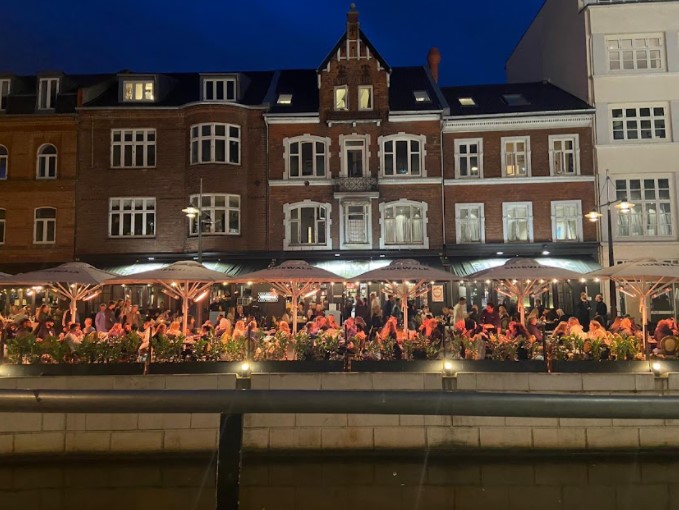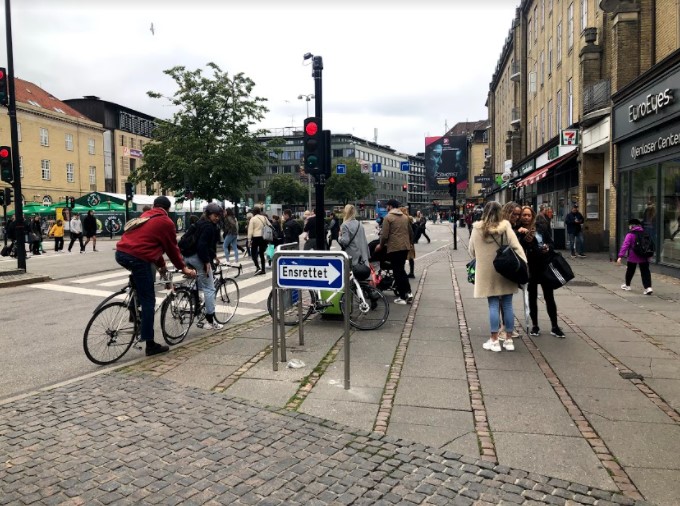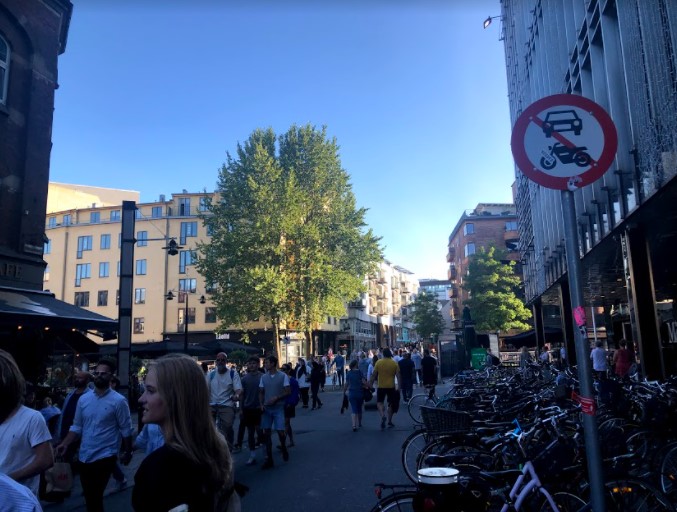Danish citizens are one of the few people who have been able to get back to a sense of normalcy amidst the pandemic. The country has handled the pandemic well with 81.7% or 4,210,892 fully vaccinated, according to the Danish Health Authority.

Denmark is on pace to lift all remaining COVID restrictions on September 10 after the health ministry declared the virus “no longer a critical threat to society”. A number of restrictions have been lifted as early as September 1 like showing a valid corona pass to sit in restaurants and bars, and the ban on discos and nightclubs.
As seen in the pictures below the citizens have gotten back to a sense of normalcy with no masks mandates, restaurants allowing people to sit inside, shops opening back up to full capacity, requiring people to have a corona passport and more. Peter Ronn, a resident at Borglum Kolligiet, said “It’s been great to have everything back open. I’m glad that Denmark took things seriously unlike other countries. We are able to get back to our regular lives.”
Many are happy for the progress of Denmark opening back up, but others are ready for the pandemic to be over all together. Another resident at Borglum Kolligiet, Nikolaj Waerke expressed similar views to Ronn, but he would like for the pandemic to be over all together. “We have been in it for so long. I can’t wait until we can just get rid of it.”

People cross the street near the Aarhus Central Train Station
Denmark has handled the pandemic extremely well compared to other countries like the United States. While taking into consideration the differences in population, culture, economy and more, America has been in the spotlight with the heavy refusal of quarantines, mask mandates, lack of supplies, lack of trust in the government, etc.
Recently, pharmacies and state governments in America have thrown away at least 15.1 million doses of COVID-19 vaccines since March 1, according to government data obtained by NBC News. The US has also faced a number of medical device shortages like hospital beds, gloves, testing supplies, ventilators and more.
Citizens have also been very combative, going as far as to have protests against wearing masks which have risen despite the rising numbers of COVID-related deaths and cases. According to the Centers for Disease Control and Prevention COVID Data Tracker, within the last 30 days the total number of cases in the US are 39,488, 866 with 641,725 deaths.
Many people in America had expressed their various opinions on how their country was handling the pandemic. For receptionist at Glasser Clinic of Greenview Medical Group in Bowling Green, Kentucky, Runetta Arnold, working as a essential worker has been an eye opening experience for her.

“So many people should take this seriously. I see so many people everyday who come in with symptoms, pains and more. We should all take the initiative to get vaccinated, wear masks and help each other,” said Arnold. “One thing we can all agree on is that we are tired of being in this pandemic.”
Out of Kentucky’s population of 4,449,052, 48% or 2,174,020 are fully vaccinated, as stated by USA Facts. National Public Radio has listed Kentucky is one of the states with the highest-risk for COVID.
Her daughter, Josland Arnold says that American people have embarrassed themselves throughout the pandemic. “No one wears a mask when they should be. People are going everywhere even if they are sick or have symptoms. Nobody wants to get vaccinated. It’s just a mess.”
Josland and her wife, Dayla Scott, have been out during the pandemic due to their jobs, but feel uncomfortable around others. Scott is a school teacher and doula. Arnold is a call center worker at a local factory. “People are dying from this. People’s kids and family members are being affected by this. It’s sad to see people get so angry about getting vaccinated and wearing masks. This pandemic could have been avoided if everyone did what they were told,” said Scott.

The coronavirus may take some time to eradicate, especially with the Delta Variant, vaccines and supplies for many countries. It’s safe to say that many people are ready for this to be over, but we all must be on the same accord when battling the virus.
For more information on where to get the COVID-19 vaccine in Aarhus, download the infographic below.
This story is for everybody, but I what I had in mind was to connect people from my home state in America to Denmark, due to how many people rarely travel outside of Kentucky. Due to the conditions of my state in the pandemic, I wanted to motivate people to act right and do what they go to do to get rid of the virus.
I think this is a highly informative way to answer our task. I enjoyed that you compared the two nations, and how they are dealing with covid. I think it shows the situation in Aarhus in a great way, especially to a American audience.
I enjoyed the assignment. Gabbie uses facts and figures to back up her statements and provide an eye-opening piece on the comparison of her home country compared to Denmark. She uses a great number of interviews which creates a more intimate piece, and makes the audience feel closer to the current COVID situation in both Denmark and the US.
I really liked this assignment because it combines data from Denmark and the US in order to show how these different nations have coped with the same situation. I also love the infographics that is linked at the end of the article with very useful information about COVID.